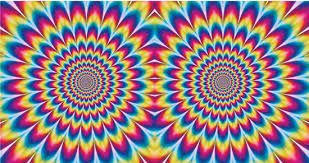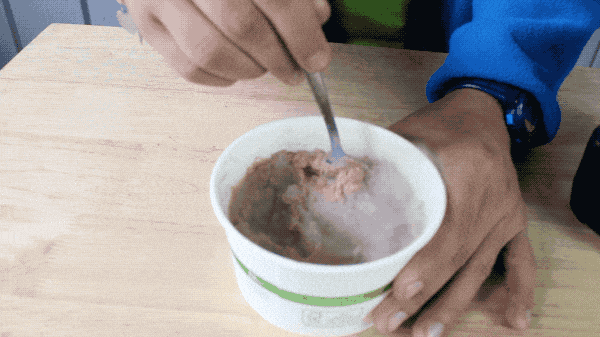
For the most part, humans rely on our brains interpreting five senses (sight, sound, smell, touch, and taste) to tell us about the world around us. However, you can’t always trust them. Our eyes are a huge factor in how we view the universe. We trust them, but we can’t always believe what they show us.
Optical illusions can trick our eyes and brain into seeing things that aren’t really there. You have probably experienced this at some point, so why not test you?
Here at camp we not only love challenging our brains with math, physics, engineering, and astronomy, but we also like to challenge the way our brain work. These are a couple of optical illusions that we have here at camp.
This first one is all about shade reference. You should see black, grey, and white stripes. The gray stripes adjacent to the black ones look darker, and the gray next to the white ones looks lighter. However, they are actually the exact same color!
Your eye focuses an image of the striped pattern on your retina, a layer of light-sensitive cells at the back of your eye. Nerve cells in the retina begin processing the light and dark information in two different ways. Some cells in the retina take a look at the big picture, receiving information from a large area of the retina. They blend light from several stripes and react as if the light were mixed together. When there are white stripes on either side of the gray stripes, you see pale gray. When the gray stripes are surrounded by black stripes, you see dark gray.
Even though some nerve cells blend the light from the stripes together, others receive information from a small area of the retina, allowing you to see the striped pattern.
For this second one you might start to see something that isn’t actually there. You may see spots where the white lines intersect, but if you try looking right at one, it will disappear. The spots, of course, aren’t really there. They’re caused by the way your eyes respond to light and dark areas. When an area is surrounded by light, your eye compensates by “turning down” the brightness a bit, making you see darkened blobs. In this grid, the areas surrounded by the most white are at the intersections of the white lines. Since this phenomenon works best in your peripheral vision, the spots disappear when you look directly at them.
These are just a couple of the optical illusions that we have to bend your mind at AstroCamp. To see the rest, you’ll just have to come to summer camp!
Written by: Mimi Garai




